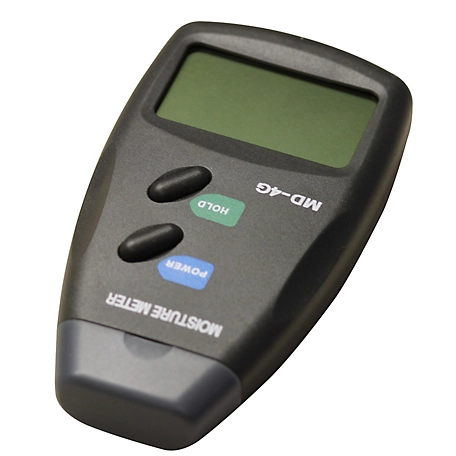Exactly How a Moisture Meter Can Enhance Your Building And Construction Tasks and Prevent Damage
Exactly How a Moisture Meter Can Enhance Your Building And Construction Tasks and Prevent Damage
Blog Article
Recognizing the Importance of a Moisture Meter in Avoiding Mold and Water Damage in your house
In the world of home upkeep, the existence of dampness can often be a quiet yet powerful opponent, qualified of triggering pervasive mold and mildew development and insidious water damage if left untreated. Understanding the significance of a moisture meter in this battle is not just an alternative but a calculated requirement.
Relevance of Moisture Discovery
Reliable wetness discovery techniques are important for guarding buildings and avoiding possible mold development and water damage. Moisture can seep into numerous structure materials, causing structural issues and carcinogen. By making use of a moisture meter, homeowner can proactively recognize areas susceptible to excess moisture, permitting timely intervention and reduction techniques.
Moisture meters offer precise analyses of wetness levels in different materials such as drywall, concrete, and wood. This data helps in determining locations of worry, even in hard-to-reach or covert areas. Early detection of moisture build-up allows prompt repair work or modifications to prevent additional damages.

How Moisture Meters Work
Wetness meters play a critical duty in the aggressive recognition of excess moisture, helping in the avoidance of possible mold growth and water damages by giving precise analyses of wetness levels in various structure products. Some advanced dampness meters combine both pin and pinless modern technologies for extensive wetness detection. Understanding just how moisture meters function is crucial for precise and timely dampness degree evaluations, enabling effective precautionary steps against mold and water damage.
Finding Early Caution Indications
Upon initial assessment of a home, recognizing refined indications of excess dampness becomes vital in the very early discovery of possible mold development and water damages. Some usual very early indication consist of stuffy smells, water stains on wall surfaces or ceilings, peeling off paint or wallpaper, and distorted or discolored surface areas. Musty odors often suggest the visibility of mold and mildew or mold, also if no visible indications appear. Water spots can signify leaks or infiltration, while peeling paint or wallpaper may be an outcome of dampness jeopardizing the bond of these products to the surface. Distorted or tarnished surfaces, such as bending floorboards or discolored drywall, are clear indicators of water damage. In addition, a boost in allergy signs or breathing problems amongst owners might suggest the visibility of mold and mildew due to excess wetness. By promptly recognizing and attending to these very early indication, home owners can reduce the threat of considerable mold and mildew development and water damages in their residential properties.
Preventing Mold Growth
Recognizing very early caution indicators of excess moisture within a residential or commercial property not only makes it possible for punctual detection of possible mold growth and water damages however also serves as a proactive step in protecting against the expansion of mold. To efficiently protect against mold development, it is vital to deal with any resources of moisture quickly.
Along with dealing with moisture resources, keeping interior humidity levels below 60% can substantially inhibit mold and mildew growth. Appropriate air flow, sufficient insulation, and utilizing a/c or fans can help regulate indoor moisture levels. Keeping an eye on dampness degrees in locations susceptible to moisture, such as basements and creep spaces, utilizing a dampness meter can additionally assist in early detection of raised moisture levels why not try this out and prospective mold development. By taking proactive steps to protect against excess wetness and mold growth, home owners can guard their property and interior air quality.
Benefits of Regular Monitoring
Regular monitoring of moisture levels in a building can play an important function in preserving a healthy interior setting and stopping possible mold and water damage. By consistently inspecting moisture degrees, home owners can spot any type of issues quickly and take required actions to avoid mold development and water damage. One of the crucial benefits of routine tracking is very early detection. By identifying and addressing high moisture degrees early on, house owners can interfere before mold and mildew has the opportunity to create and spread out. This positive method can conserve both time and money over time by preventing comprehensive mold and mildew remediation and fixing prices.
Moreover, regular surveillance enables home owners to track patterns and patterns in dampness levels over time. By establishing a standard and monitoring adjustments, individuals can recognize any areas of issue or potential vulnerabilities in the residential or commercial property's structure. This data-driven technique allows targeted interventions and upkeep initiatives to deal with underlying issues prior to they rise right into more considerable issues. Eventually, the regular surveillance of dampness degrees equips property owners to click reference safeguard their building, safeguard their wellness, and protect the stability of their indoor atmosphere.

Final Thought

By utilizing a wetness meter, property owners can proactively determine locations prone to excess wetness, allowing for prompt treatment and mitigation techniques.

Keeping an eye on dampness levels in areas prone to wetness, such as basements and creep spaces, utilizing a wetness meter can also aid in very early detection of elevated moisture levels and possible mold and mildew growth. (Moisture Meter)
Report this page